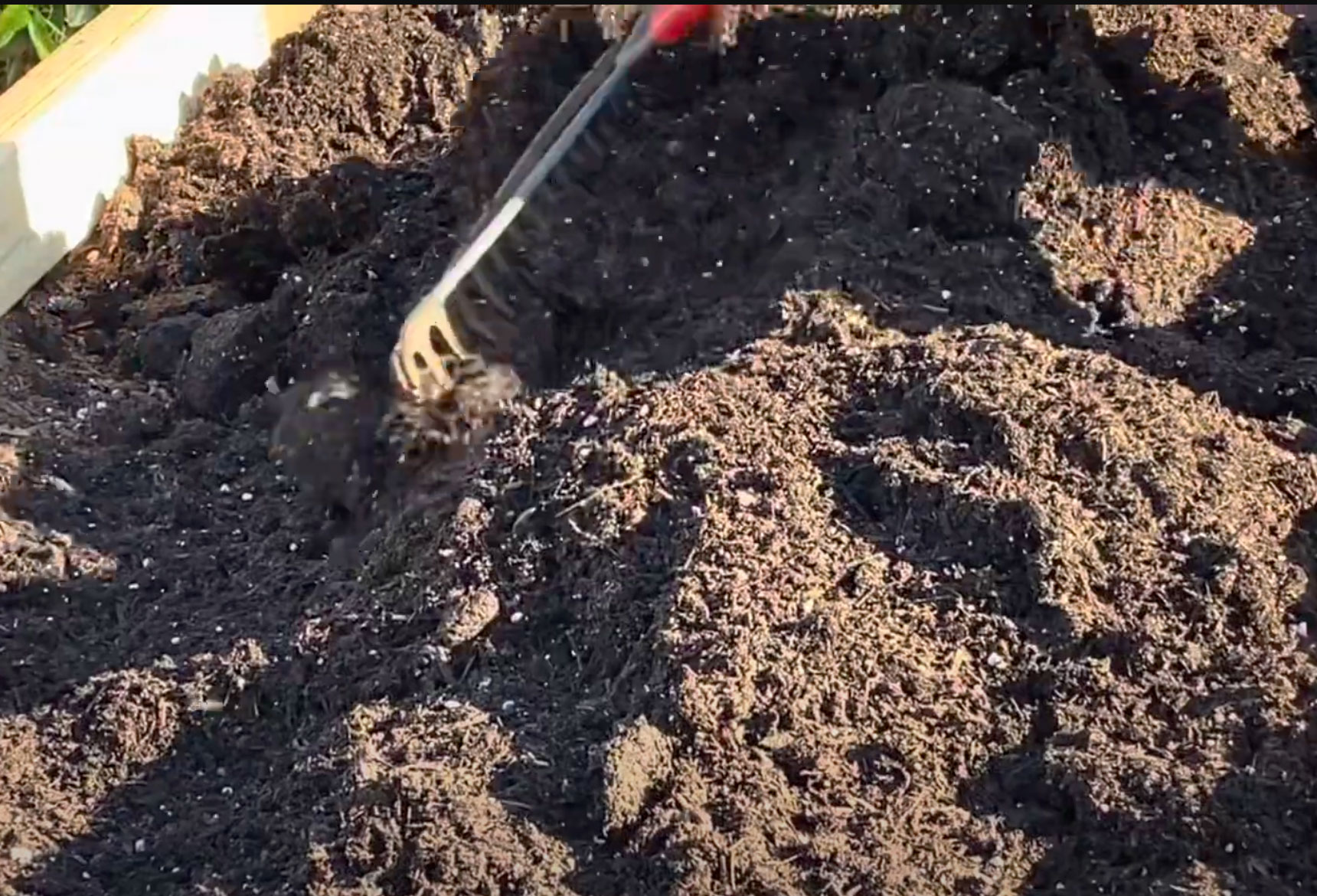Soil Mix for Raised Garden Beds
The exact blends, ratios, and step-by-step method we use to fill raised beds once—and keep them thriving for seasons.

What makes a great raised bed mix?
Raised beds do best with a blend that drains well, holds steady moisture, and feeds the soil food web. Think of it as structure (minerals), nutrition (compost), and moisture management (coir/peat + aeration). Below are three reliable mixes—pick the one that fits your climate and budget.
Lucky Cat 9b Raised-Bed Mix (Products & Ratios)
For our hot, dry zone 9b summers, this blend stays airy, holds moisture, and feeds steadily without going soggy:
| Component | Product | By Volume | Notes |
|---|---|---|---|
| Base Mix | Kellogg Raised Bed & Potting Mix | 70% | Ready-to-use raised-bed blend with good porosity and moisture holding. Check bag size (often 2 cu ft; some G&B bales are 3 cu ft). |
| Compost | Garden Time Mushroom Compost | 30% | Rich organic matter; typical bag is 1 cu ft. Don’t overdo—mushroom compost can be salty; 30% keeps texture balanced in hot zones. |
| Mulch (top) | Sta-Green Premium 2-cu ft Brown Mulch | 2″ layer | Critical in heat: reduces evaporation and evens soil temps. (Popular choice — 5k+ bought last week.) |
| Aeration / Moisture (optional) | Sta-Green Perlite, 8 qt (Organic) • Happy Trees Coco Coir | Add 5–10% as needed | Perlite improves drainage and root oxygen; coco coir steadies moisture in hot/dry beds. Blend lightly into top 8–10″ or through the mix. |
Why 70/30? In 9b heat, we want moisture retention without compaction. Kellogg’s raised-bed mix gives structure & airflow; ~30% mushroom compost boosts organic matter while keeping salts reasonable.
Example for a 4′×8′×12″ bed (32 cu ft)
- Kellogg Raised Bed & Potting Mix (70%): 22.4 cu ft → ~12 bags at 2 cu ft or ~8 bales at 3 cu ft.
- Garden Time Mushroom Compost (30%): 9.6 cu ft → ~10 bags at 1 cu ft.
- Top-off for settling: add ~10% extra if you’re filling a brand-new bed (≈ 3 cu ft).
Fertilizer Plan (Espoma)
At Planting/Transplant — Bio-tone Starter Plus
- Bed prep (economical): mix ~4 lb per 100 sq ft into the top 4–6″ (for a 4×8 bed ≈ 1.3 lb).
- Potting-mix method (optional): if blending into a custom potting mix, use ~1 cup per cu ft.
Ongoing Feeding — Garden-tone
- Soil prep rate: about 3–3.5 lb per 50 sq ft (≈ 2 lb for a 4×8 bed); work into top 4–5″.
- Established plants: up to ~⅓ cup per plant or along rows; re-feed every 4–6 weeks during active growth.
Zone 9b tips: Plant slightly high, water in deeply, and keep that 2″ mulch refreshed through summer. If heat is extreme, add afternoon shade and tighten irrigation intervals.
How Much Soil Do I Need?
Measure the inside of your bed in feet. Volume (cubic feet) = Length × Width × Height. 1 cubic yard = 27 cubic feet. Bags are often 1.5 cu ft each.
Example (4′ × 8′ × 1′ bed):
- Volume = 4 × 8 × 1 = 32 cu ft
- In cubic yards: 32 ÷ 27 ≈ 1.19 yd³
- 1.5 cu ft bags: 32 ÷ 1.5 ≈ 22 bags
Breakdown (Balanced Mix):
- Topsoil (50%): 16 cu ft
- Compost (30%): 9.6 cu ft
- Aeration (20%): 6.4 cu ft
Settling is normal: After the first few weeks, the mix may drop 10–20%. Top off with compost and re-mulch.
Step-by-Step: Filling a Raised Bed
- Prep the site: Level the bed; lay weed barrier only if necessary (cardboard is fine under invasive weeds).
- Measure & calculate volume: Use the formula above to plan bulk or bagged materials.
- Stage ingredients: Pile compost, topsoil, and aeration materials nearby. Lightly moisten dusty ingredients.
- Blend thoroughly: On a tarp or in the bed, layer and mix until uniform. Avoid thick “lasagna” layers if you plan to plant right away.
- Charge & amend: Mix in a gentle organic fertilizer per label; if using peat, follow product directions for dolomitic lime to balance pH.
- Fill & settle: Fill to the rim; water deeply to settle. Top off if needed and finish with 1–2″ mulch (wood chips or straw) to reduce evaporation.
- Plant & water: Plant transplants slightly high; for seeds, keep the top inch evenly moist. Consider a simple drip system for consistent results.
Dial It In (Climate & Crops)
- Hot/dry climates: Favor coir over peat; add extra compost, and keep a 2″ mulch layer. Biochar (pre-charged) can smooth moisture swings.
- Cool/wet climates: Increase mineral/topsoil and aeration (pumice/perlite); reduce coir/peat slightly for faster drainage.
- Heavy feeders (tomatoes, squash): Work in extra finished compost at planting and side-dress mid-season.
- Root crops: Sift out large chunks; avoid fresh manure; keep texture loose and even.
- pH & nutrients: Aim for pH ~6.3–7.0. When in doubt, follow product labels or do a simple soil test kit mid-season.
Common Mistakes (and Easy Fixes)
- Using only compost: Too rich/compact. Fix with topsoil + aeration.
- Unmixed layers: Roots stall at boundaries. Blend ingredients thoroughly.
- No mulch: Surface dries out fast. Add 1–2″ organic mulch after planting.
- Over-fertilizing early: Tender roots can burn. Start gentle; feed as plants establish.
Quick FAQ
Can I reuse last year’s soil?
Yes. Pull roots, top-dress 2–3″ of compost, mix lightly, and refresh mulch. Add aeration if the bed feels dense.
Coir or peat—what’s better?
Both improve moisture retention; coir is a renewable option. If using peat, follow label directions to buffer pH (often with dolomitic lime).
Do I need vermiculite and perlite?
You can use either. Vermiculite holds more water; perlite/pumice improve drainage. In hot/dry regions, vermiculite or coir can help steady moisture.
Want a printable checklist version of this guide?
Get the Soil Mix Checklist